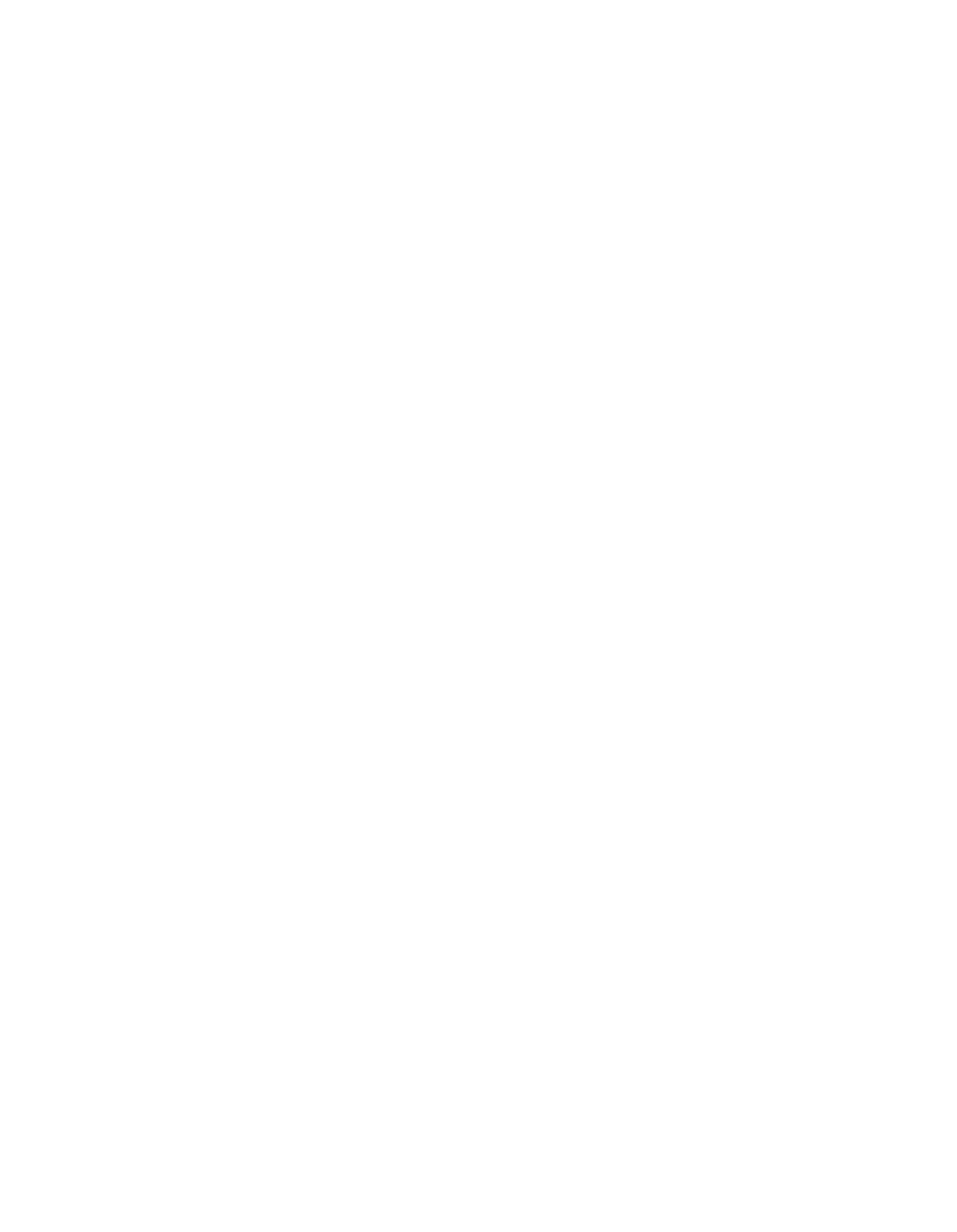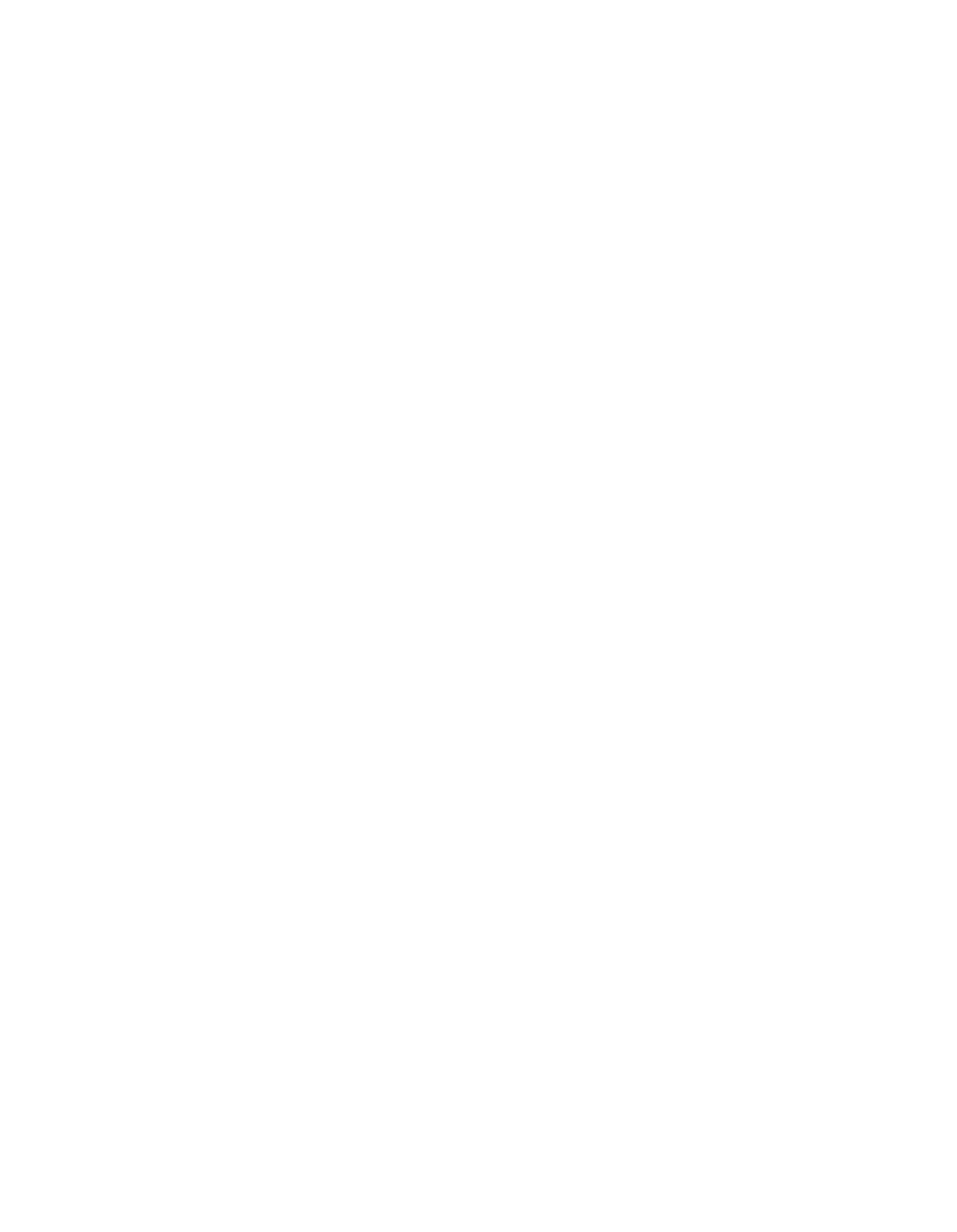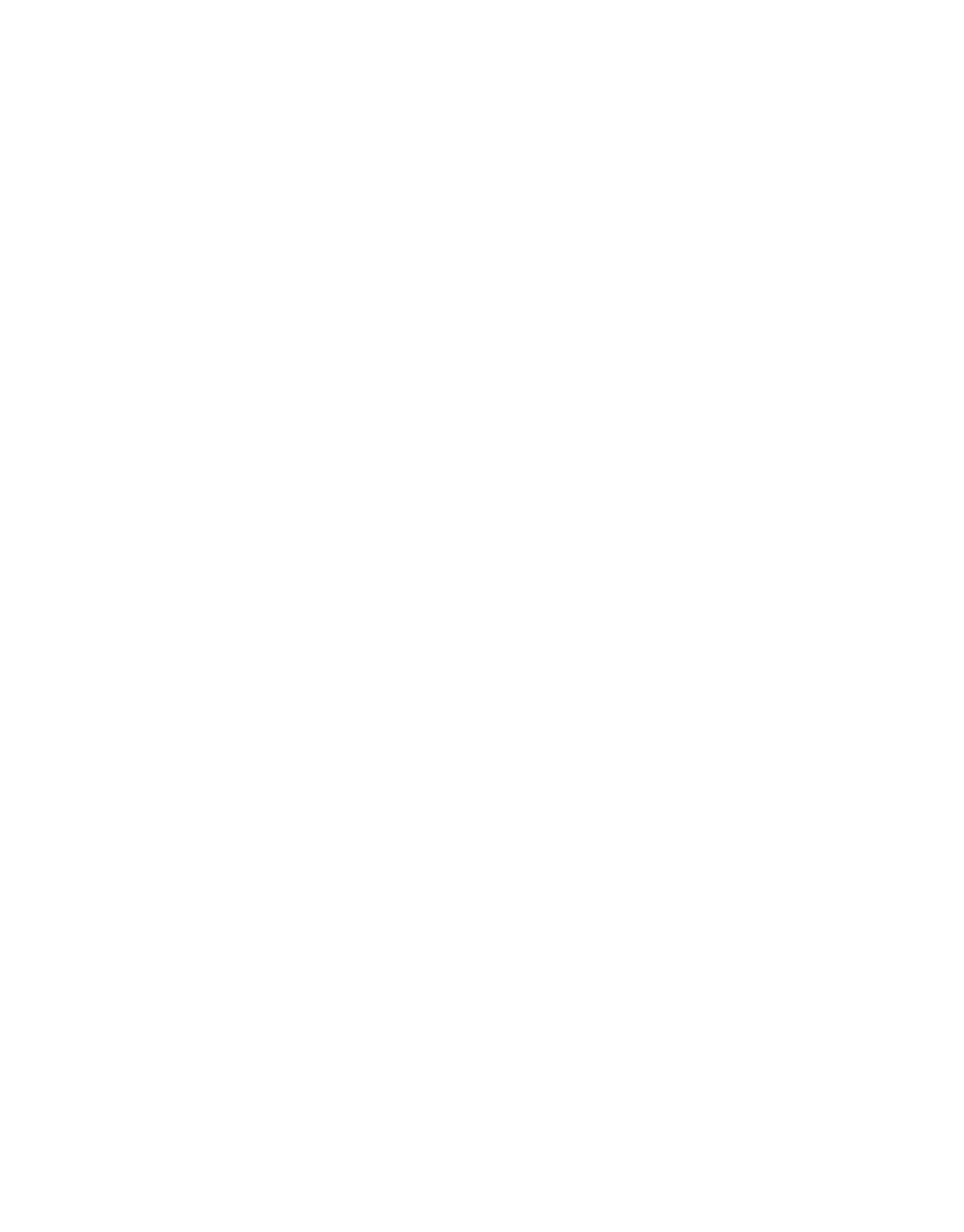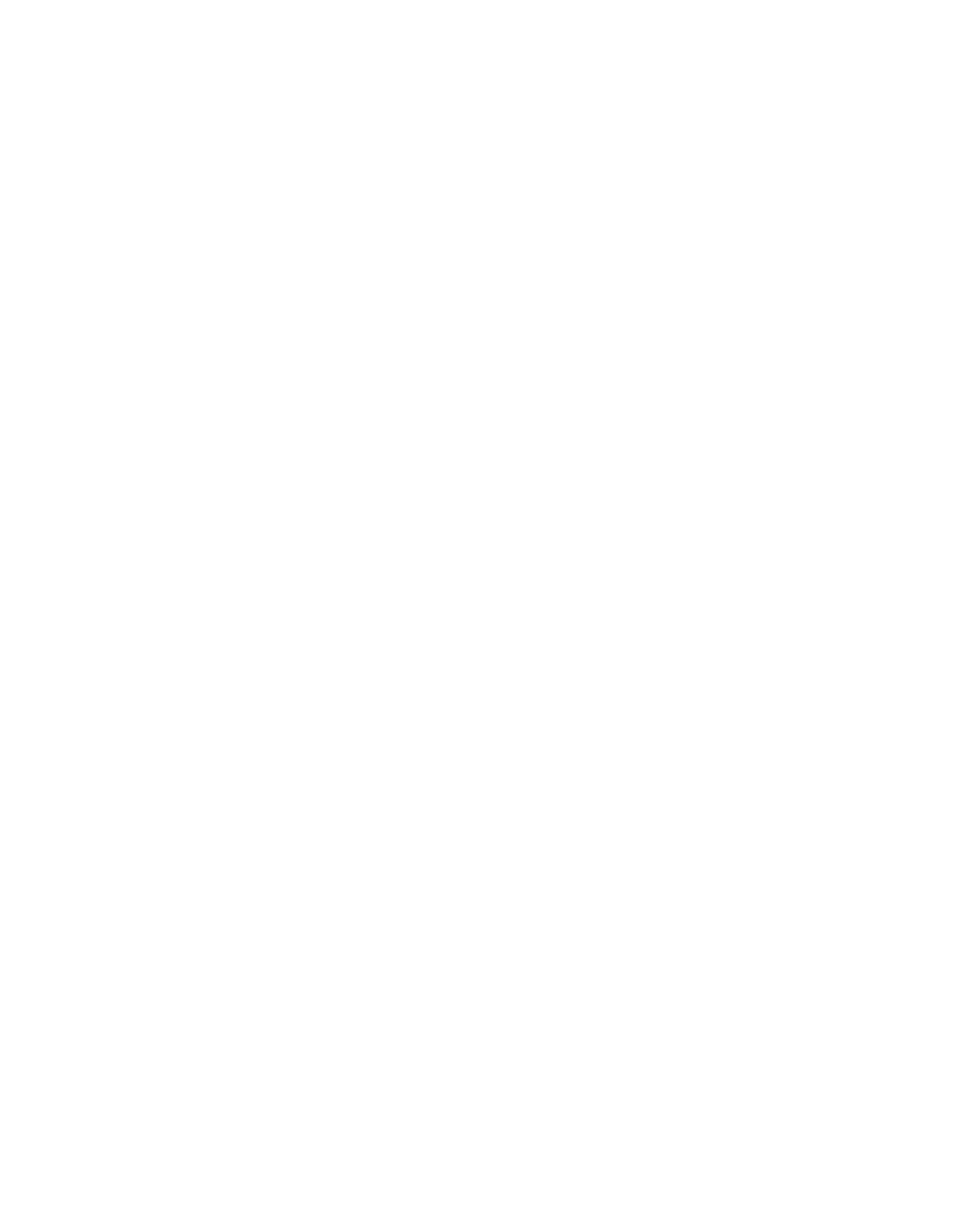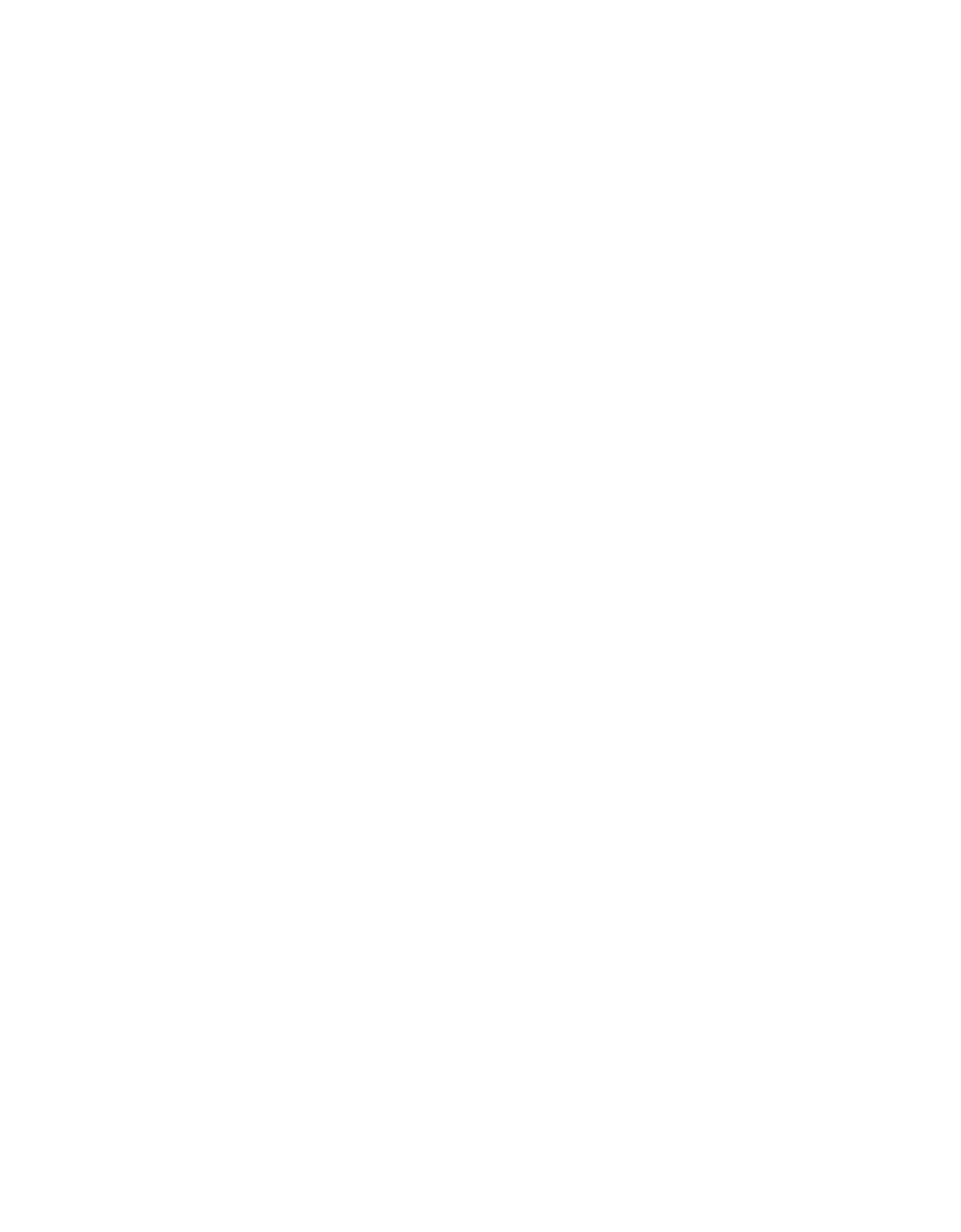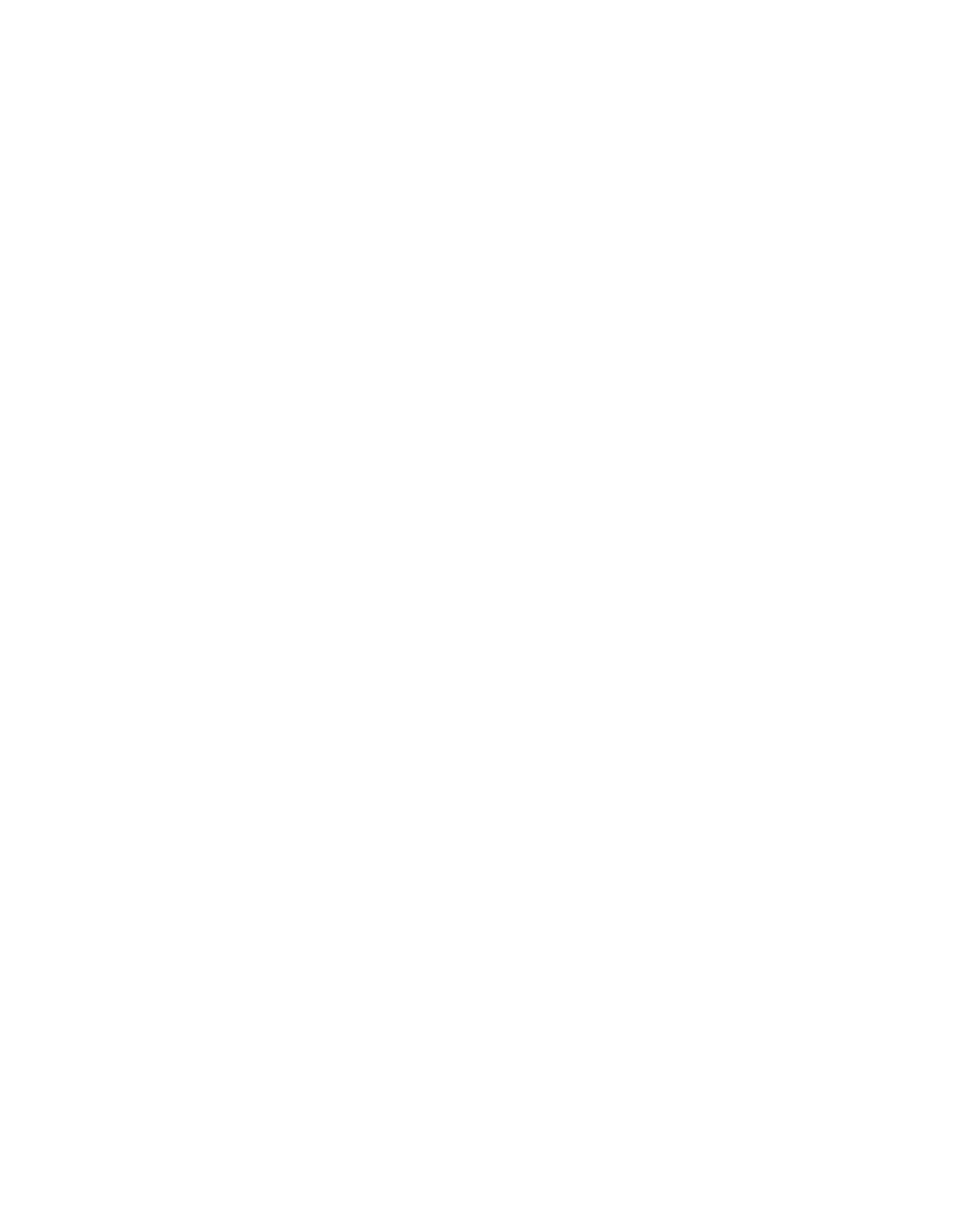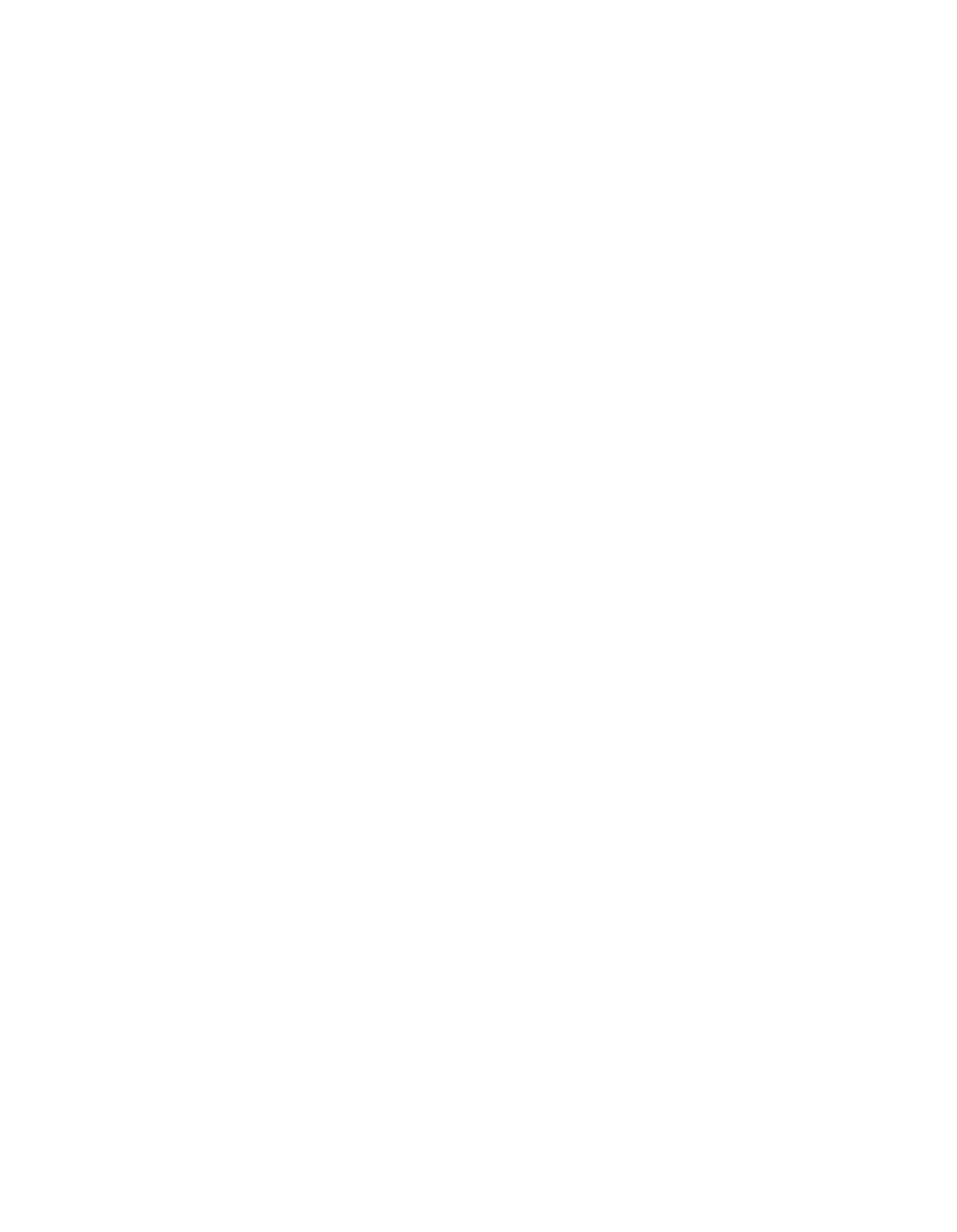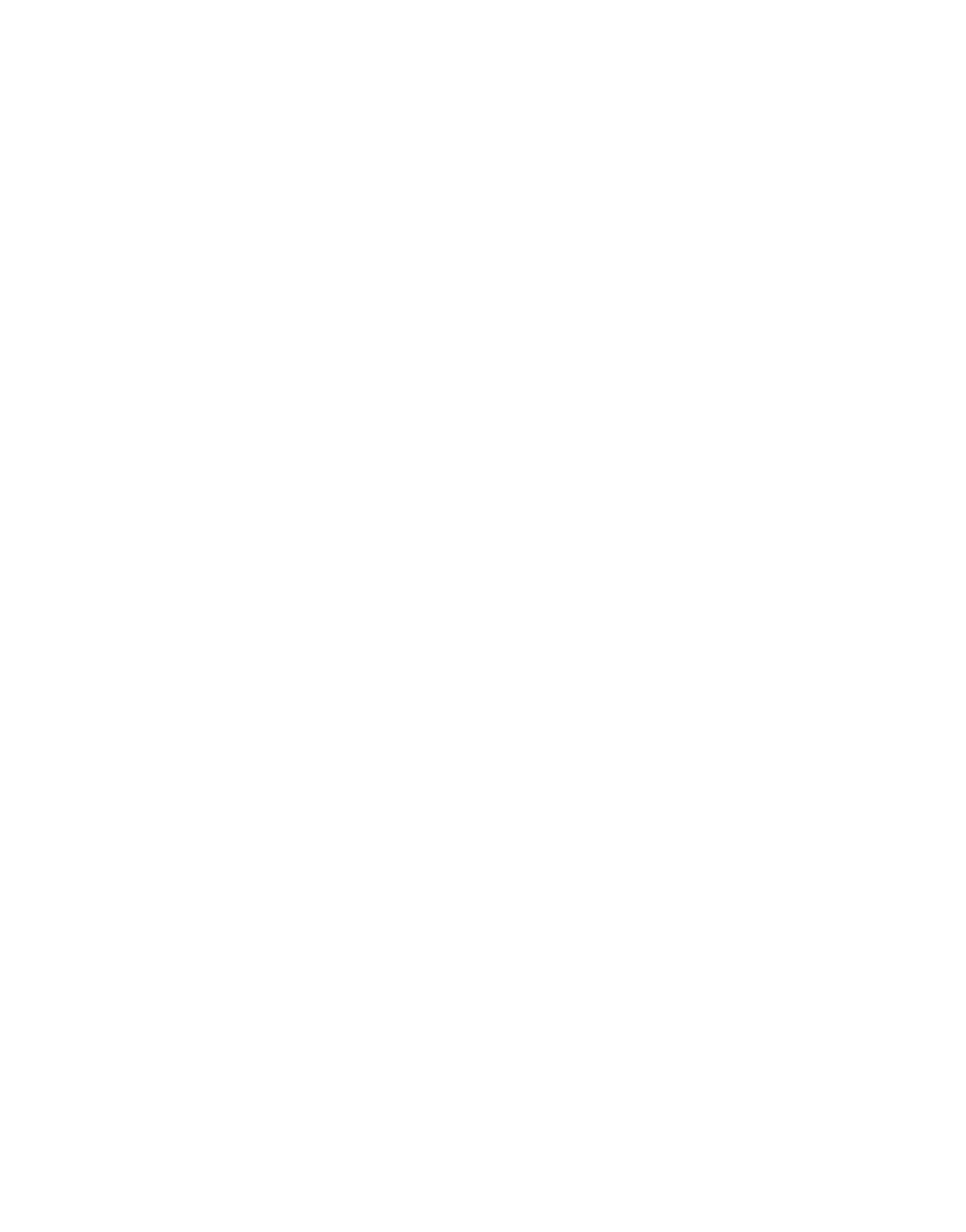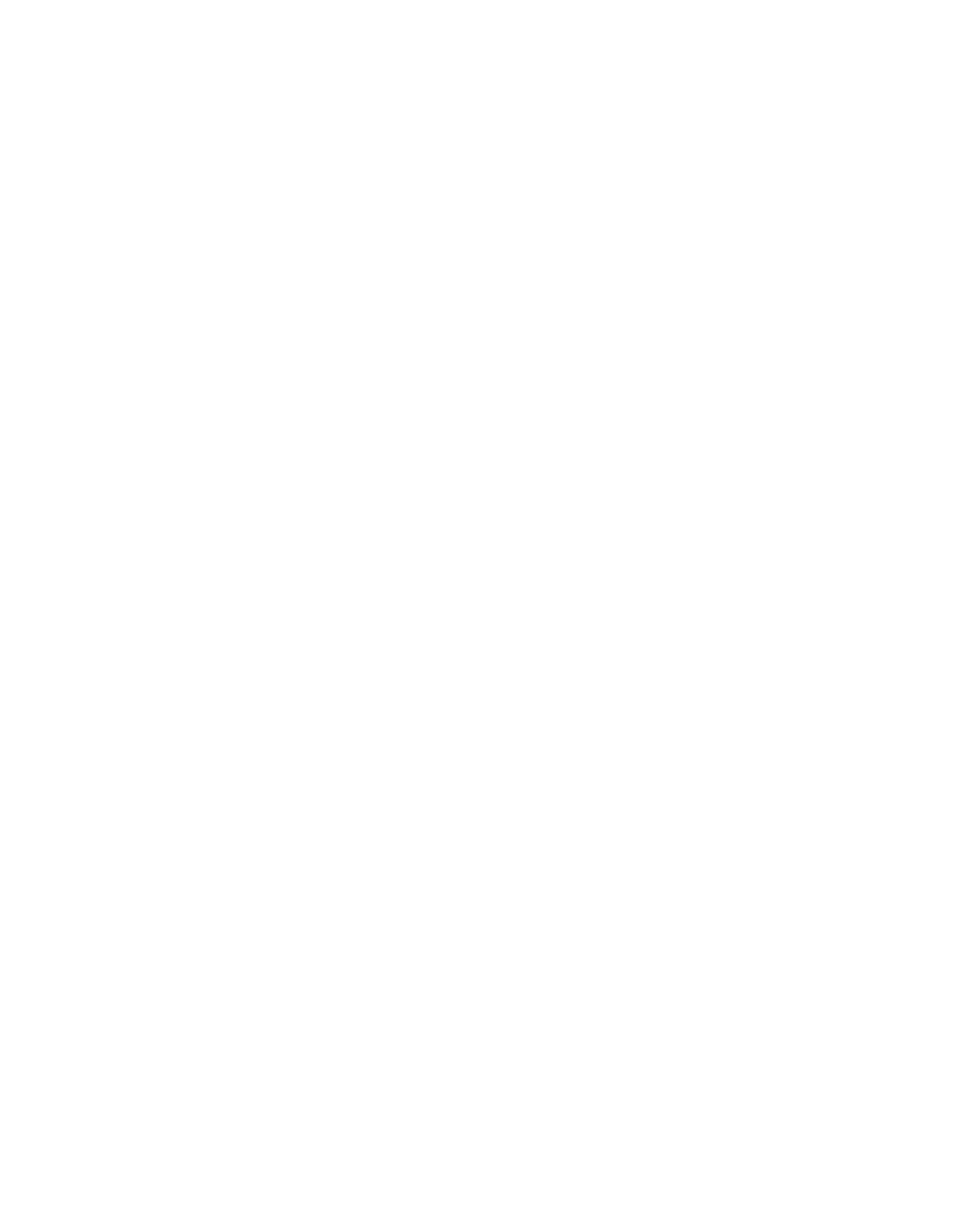ILLINOIS POLLUTION CONTROL
BOARD
July 19,
1984
IN THE MATTER
OF:
PARTICULATE
EMISSION LIMITATIONS
)
RULE
203(g) (1) AND
202(b)
OF
)
R82~1
CHAPTER
2
PROPOSED RULE,
FIRST
NOTICE.
PROPOSED OPINION AND
ORDER
OF
THE BOARD (by J.
D. Dumelle):
On January
1,
1982 the Board proposed the readoption of
Rules 203(g)(1) mow codified as
35 Ill.
Mm. Code 212..201-212.204
and 202(b)
now
codified as
35 Ill.
Adxn.
Code 212.123
of Chapter
2
(now 35 Ill.
Adm,
Code, Subtitle B:
Air Pollution.
These
rules concern limitations upon particulate emissions for fuel
combustion emission sources using solid fuel exclusively.
Hearings were held to consider the merits and economic impact of
these rules on April
13 and April
21, 1982
and August
3, August
12,
and September 29,
1983.
The public comment period closed on
February
2,
1984.
THE PROPOSED RULES
The Board has proposed the Leadoption of Rules 203(g(i)
and
202(b). Rule 203(g) (1)
establishes emission limitations for fuel
combustion sources that use solid
fuel exclusively.
It consists
of four subsections,
three of
which
apply
to sources constructed
before April
13,
1972 (existing sources
and one of which applies
to sources constructed after that date (new sources),
For
existing sources in the Chicago Major Metropolitan Area
(MMA) the
proposed rule sets an emission limitation of 0.1 pounds of
particulates per million British thermal units
(lbs./mBtu) actual
heat input.
Outside of
the Chicago MMA,
a sliding scale operates:
sources larger than
250 mBtu/hr. actual
heat input would be
subject to the 0.1 lbs./mBtu standard,
but
sources under
10
mBtu/hr.
actual heat input could emit up to 1.0 lhs,/mBtu~.
Intermediate—size boilers would he limited
within
that range as
established by a specified
equations
Subparagraph
(C) of
203(g) (1) provides
for
exceptions to
the
strict limits
of
the
rule.
It allows greater emissions for existing sources
if the
rate is consistent
The Boardwishest~expreiiT~sappreciation to late Board
Member
and Vice Chairman Irvin Goodman for
his
work on these regulations
over the years
until his death during this proceeding,
to Marili
McFawn for her service as hearing officer and to Lee R. Cunninghai~
for his assistance in drafting
the
Opinion and Order.
59~83
with
or~ginai
doeign
or
perforrnai~c’~’~
The
last
section
of
203(g)(i)
specifies
that
em~sions
from
new
sources
shall
not
exceed
0~i
Jhs~/mill~on Bt!
heat
input~ Rule 202(b)
relates
to
visual
emission
standar
~s
n
general
it
forbids
emissions
With
an opacity greater than
0,
although exceptions
are
provided
during
specified
pe:ioó~
of
time~
INVM~iDATIO~1
OF P1.R~CULATL/ND OPACITY RULES
Regulat~onscontrolling em
S5iOPS
of air pollutants were
adopted by the Board on April U
1)
2
in R71~23as Part II
of
Chapter
2.
Commocwealth Ediso
su
ecuent’y filed a petition in
the First District Appellate Couit eo~ g review of several
of
those rules,
including Rule
203
g
Particulate Emission
Standards and Limitations for ~me1 C rrlustion Emission Sources
Using Solid Fuel ExcIusively~ Tte ~~pe
ate Court in Commonwealth
an
v.
Pollution Controi
oaro,
~5 Ill. App.
3d 271,
323
~
2d
84
(1975)
reverscd tie U
otio’i of those rules and
remanded
them to the Board for
t
r
~erconsUeration with
instructions either to validate th
in dccordance with Section
27 of the Environmental Protection Act
Act) or to prepare proper
rules as substitutes~
In its npinion thc Appellate Court was
~unable to state that the Board took int
account the technical
feasibility of these rules,” and that ~‘thereis no evidence that
the Board took into account tho
c
r~ni ~‘e~onableness of these
rules for a substantial number of ~
generating units in this
state.”
The Court concluded that
tie requlations were not
promulgated in accordance with Section 27 o~the Act and were,
therefore, arbitrary and unreaconible
he Court also instructed
the Board to review ary new e’~’ide~iefr the purpose of validating
or modifying the rues
The Appellate Court decis;o~w
a pealed by the Board to
the
Illinois
Supreme Court,
~
Pollution Control
d’ard~
/
11
)~ I
~
N~E.2d 459 (1976~.
The
Supreme
Court,
rather than re’ iewiag the record and Board
Opinion to determine
qhether the Boa d hU
complied with Section
27 of the Act in promulgating tn?
~ u ~tions
declined “to
determine the velidity of Rules
03(ct
,
,
,
on the basis of
evidence adduced at hearings he~d a U
)
197. and 1972 and. the
Board~sopinion of April
13,
1972
nc4’ead, it affirmed the
Appellate
Court~sreversal and remaUed
for
further consideration,
citing the Appellate Court’s referM~ret
the “wealth of new
information”
that had been gathered
n tae Board’s inquiry hearings
and hearings on Board and Aqencv
ro ~
to amend Rule 204
(R74~2and R75~5,respectively)~
On April
8,
1976, the Board e~tored
ii
Order in R7U~23,
reopening the record for the ourpos~of validating Rule
203(g)
(1)
and
ordering
the
record
in
the
C’ i~
~
~
‘
proceedings,
R74—2
and
R75~5,
to
be
incorporated into
tn.
eccrd in
R71—23.
Two
subsequent hearinas were held on
Ri3-~
and R74~2,consolidated,
in May, i976~ The Board took th
no~t;or that further
hearings
were
unnecessary
in order to compi~w~n the Supreme
Court’s
mandate
which
~nvited
the
Board
to
‘~Urda~.the
regulations
in
question
in
light
of
information
gt~
~
at
the
hearings
held
subsequent to
the original ~ro’e~dln
~,
n’~
Board reviewed the
testimony and exhibits in the rhr c
d~nasand, based on the
information available in these rc
L
,
~rd
taking into consider-
ation the issues identified by the
1
alidated Rule 203(g)(1)
on July
7, i977~
The validation of the rule
a
-‘
unsuccessful.
On
September 27,
1978, the Tb’~rd
Di
‘~“~
I ~te Court again
struck
down the rule finding that
red failed to
consider intermittent control ey~
iled to have an
economic impact study prepared, tre~e~
~ed considered and had
improperly considered a report
(tfe
.
~eport”) which
included
references to material
~o
~
‘il, without affording
an
opportunity for opposing viewpcrna
o be presented (Ashland
Chemical Co. v._PoUution Control bo~re(J)781
64 Ill, App.
3d
69).
The Board did not appeal
t
it
UcLi’~r, The Board did,
however, attempt
to appeal
a simfl~deci~inin the First District,
but was
precluded from doing
RO
I’
.‘
~‘
reme Court which held
that
the Board was estopped fron ~aU a~
because it had
failed to appeal the Ashland, ah~v~l~c~-~on
which concerned
the same issues,
(The Illinois
SUte
~1:~~rber
of
Commerce,
et
al,
v.The_Pollution Control Board
(6
L’
‘~
~“‘5
~d~39,
384 N~E,
2a
922(1978),
Tten, on Feb”uary
4
i)82~
urt struck down
Rule 202(b),
the opacity rule,
i~
na
of Ce~~~Cor.
v.
Illinois Pollution Control Board
~,.
a.
(445 N.E.
2d
752
(1983)
~
its finding of eeonoiU
reasonableness and Uchnical feasib~
:j
~‘egordingthe then
invalid Rule 203(g)(l) in suppor~.ci the opacity rule,
The (ourt
concluded that since that finding Ia’ b~enheld invalid regordinq
Rule 203(g)(1),
that it was necoasarilv
,~iialidregarding th’~
opacity rule as well.
Old Rule 203(g)(1)
and 202~b
~ei
~~emainedinvalid ever
since
these
decisions
and
it
is
I’
Ui’
coUexr
that
the
pre~er$
proceeding arose.
ACTIONS TAKEN IN RESPONSE
~
I)URiS’ CONCERNS
During the lengthy
legal his~c
i
ni
“a.
invalidated rUe~ at
issue here, the issues which have to~n:U ,~iebacee of the
4
invalidations have been the lack of an economic impact study, the
perceived failure to consider the economic reasonableness of
simultaneous compliance with the sulfur dioxide and particulate
rules,
the failure to consider intermittent control systems and
the
reliance on the “Marder Report” ‘without allowing opposing
viewpoints to be heard,
in the present. proceedings, the Board
has attempted to respond to each of these concerns,
First, an economic impact study has been prepared,
submitted,
and considered at hearings~ Entitled “The Economic Impact of
Repromuigating the Remanded Particulate
Regulations
203(g)(i) and
202(b), R82~1,”
it was entered as Exhibit #10 on August
3,
1983,
and was considered at hearings on that date, as well as on
August 12 and September 29,
1983w
An addendum was submitted in
response to the hearing officer’s request at
the September
29,
1983 hearing as Exhibit #17.
Second, the Board hereby incorporates
by reference
the
entire record of proceedings
in R71-23, R74~2and R75—5,
except
for the Marder Report,
which was prepared by Marder and Associates
under contract to the Agency to facilitate validation of the
rules in response to the Supreme Court’s remand,
That report is
an
abstract which reviews the record of three proceedings before
the Board R71~23,R74~2, and R75~5.
It organizes the information
by
subject, summarizes testimony and exhibits, and identifies
where
each item
is
found
in
the
record,
Ithile
it
was
felt
to
be
a useful
tool,
there may be some information in
it
which
was
not
otherwise part of the record, and its deletion should preclude
any
question regarding its propriety in this proceeding,
Third, the Board has considerad the question of simultaneous
compliance with the sulfur dioxide and particulate rules,
The
hearing held on April
13,
1982,
in
particular,
focused
on
that
issue,
largely through the testimony of Berkley Moore, an engineer
with the Air Quality Planning Section of the Division of Air
Pollution Control of the Illinois Environmental Protection Agency,
This issue will be discussed later in this Opinion.
Fourth, the Board has not considered intermittent control
systems since no one has offered such a proposal
in this
proceeding
and
since
“the
degree
of
emission
limitation
required
for control of any~air pollutant under an applicable implementa~
tion plan
.
,
,
shall not be affected in any manner by
any
intermittent or supplemental control of air pollutants” pursuant
to
Section
123
of
the
Clean Air Act
(42 U.S.C.
1857, ets~.),
Additionally, Section 9.1(a) of the Environmental Protection Act
requires the State to avoid the adoption of rules which contradict
the Clean Air Act.
Therefore, even if the Board were ~toconsider
59~86
5
such systems,
it
could not allow such
consideration
to affect the
emissions standards
which
it
promulgated.
Finally,
former Section
10(h)
of
the
Environmental
Protection Act (Act),
which mandated
the
Board to consider such systems,
has been deleted
and in
pertinent part has been replaced
with a provision which
states
that “emission standards for
existing fuel combustion
stationary
emission
sources located in all
areas of the State of
Illinois,
except the Chicago, St.
Louis
(Illinois) and Peoria
major
metropolitan areas
.
.
shall allow
all available
alternative
air quality control methods consistent
with federal
law”
(Section
10 of the Act)~
The Board,
therefore, believes that all of the
flaws
perceived
by the courts have been
remedied in this
proceeding.
REGULATORY
NEED FOR THE RULES
Particulates and sulfur
dioxide are criteria
pollutants for
which ambient air quality
standards have been adopted
by the
United States Environmental
Protection Agency
(tJSEPA)
under
Section 109
of the Clean Air Act.
The ambient
standards were set
at levels intended to protect
the health of the
general public
(primary
standards)
and to prevent damage to property,
vegetation,
or
other aspects
of
the
public welfare (secondary
standards).
The
levels set were based on air
quality
criteria
with
“an
adequate
margin of safety”
included for the primary
standard,
(See Board opinion in R72-7
Air Quality Standards,
18
PCB
89,
July
10,
1975).
Under Section 110 of the
Clean Air Act the
states are required
to prepare State Implementation
Plans
(SIPs) containing
control
strategies for attaining the ambient
air quality
standards,
An
important
part of the SIP is to
establish emission
standards for
each of the criteria
pollutants.
See
Section 110(a)(2)(B),
The Board has repeatedly attempted to
establish
such standards7
but all such
attempts
have been
rebuffed by the
court system.
As
a result,
USEPA has twice issued
Notices of Deficiency,
once in
1974
after
Commonwealth
Edison had challenged the
original mime,
and
again
on
July
12,
1979,
after the rules had
been successfully
attacked by Ashland Chemical,
As a
result, USEPA
could impose
sanctions upon Illinois for its failure
to establish
enforceable
particulate standards,
including
impounding federal
highway funds
and
prohibiting
industrial
expansion pursuant to
Sections
176
and
316 of the Clean Air Act,
In order
to avoid
these sanctions,
and
in
order
to
meet
the
mandate
of
the Section 9.1(a)
of the
Environmental Protection Act to
avoid conflicting
State and
federal regulatory systems, particulate
regulations
must be
adopted.
59~87
6
PARTICULATE EMISSIONS CONTROL TECHNOLOGY
There is substantial documentation in the R71~23record that
technology to control particulate emissions
is well established,
The four principal control devices are cyclones, wet scrubbers,
electrostatic precipitators (ESP),
and fabric filters
(or
baghouses).
These devices can be used alone or in combination to
attain the desired removal efficiencies
(R71~23,
Ex,
32).
When
burning coal. with a 10
ash content and
10,000
Btu/lb heat
content, removal efficiencies
of
90
to
99
are
required for
compliance with the 0,1 lbs./mBtu actual heat input emission
standard, depending on the type of boiler
being
used
(R7i-23,
R.295~303,
Ex.
Ii).
The most widely used technology
for particulate
control on
large boilers is ESP
(R71—23,
Ex,
32) which involves passing the
flue gas through an electric corona as the flue gas flows through
the precipitator, placing a charge on the ash particles,
pulling
the particle out of the gas to collect on plates in the
precipitator, and periodically
rapping the
particles off the
plates.
Collection efficiency of an ESP depends on, among other
factors, the resistivity of the ash being collected, the
temperature of the flue gas,
and the velocity of the flue gas
through the precipitator.
ESP’s are able to achieve more than
99
removal in utility operations
(R71~23,Ex,
32,
33 34,
35),
Testimony of representatives of utilities and industry
verified their ability to achieve the particulate emission standards
(R7U23~pp.
2074—82, 3842~43,2285~6,2308~10,2465~66).
Existing sources which are not presently in compliance with the
proposed rule may require modification of
already
operating ESP~s
to comply with the regulation, and
continued compliance
over time
would require proper operation and
maintenance
of the equipment.
However,
as an example of potential ESP life and efficiency,
a
unit built in 1929 by Commonwealth Edison at a design removal
efficiency of 82—83
was running close to 98
efficiency in 1971
as a result of several rebuildings (R71~23,pp. 3867~68),
As stated above, the effectiveness of an ESP is dependent.
upon the resistivity of the ash being collected,
That
resistivity is,
in turn,
affected by the sulfur content of the
coal which is burned:
the higher
the sulfur content
of the
coal, the less resistive the ash and the higher the efficiency,
However,
the
higher
the
sulfur
content
of the coal,
the greater
the difficulty of meeting the SO2
standards.
This
is one of the
59~88
7
problems
ti
~
t~’e
‘ourts found
the Board had not adequately addressed:
simultaneous ~c~piiance with both the particulate and sulfur
dioxide emia~onctandards,
Testimony was given that if
a facility
burned low sulfur coal
(less than 1
sulfur content)
as a means
to oomph
with the SO2 emission standard,
its ESP collection
efficiency would drop substantially because of the higher
resistivity of the fly ash,
Mr. Andrew Bhan,
testifying on
behalf of
the Igercy in R75~5,discussed the difference in
resistivities between high and low sulfur coals,
The generally
accepted theory for this difference is that sulfur trioxde
(SO3)
in the
fInc gas reduces fly ash resistivity, and that SOa
is
virtually abin:i~from the low sulfur coal flue gas.
A cdmparison
of flue gas co~~~e~itrations
shows 50 ppm SO3 from 3.5
sulfur coal
and
5 ppm SO~frea 0.5
sulfur coal
(R75~5,pp. 539~42),
~ test
conducted by”Comricnwealth Edison showed that particulate
emissions increased from 0.16 to 0.26 lbs./mBtu when the coal
sulfur content was reduced from 2.0
to 0.8
(R71~23,pp.
2079~-80)~The ~x~eriences of several other facilities
Uteirp~’ing
to control ~aUiculates
while burning low sulfur coal were
described in
:tner testimony (R71~23,pp. 17O5~10)~
At the April
13,
1982, hearing in R82~1,Berkley
hore
introduced T~’xhibits I and
2 regarding the issue of simnita~ea”
compliance
lie testified that those exhibits “show
ti-at tter~
are a great nurneer of sources that are in fact right now
n
compliance with both’ the sulfur dioxide and particulate
(4/13/82,
p 9).
Exhibits
1 and
2 are tables listing ccrnp~ian”c
data for all sources which must simultaneously comply with
‘~
e
sulfur dioxide and the particulate rules,
Given that the
liain
has now adopted relaxed sulfur dioxide rules applicabe
a.
“crc
of these sur’e’
all sources listed in those exhibit” arc U
compl~ance ~th t’~esulfur dioxide standards.
In the Chicago MMA,
10 of the 52 sources or 19
are
ut
‘~.
compUance
(4~13’82,
R,14 and Ex,1),
Of those 10 whiet
ire
of compliance
8 are not ordinarily operated.
Of the two
remaining sources the Commonwealth Edison~Waukegan3255 nItu
facility requires 98.20
control and is attaining 98.00
‘catin
and its Will County 1728 matu/hr,
facility requires 86 00
ca~r~i’
and
‘s attaining 85.00
control
(4/13/83,
Ex.1).
In
t
e Pe~r ~
and Ot.
touis MMA’s 10 of the 83 sources or 12
are out,
“u
compliance (4/13/82,
R.15 and Ex.2).
Of those
10,
3
a. e
ordinarily not operated.
Celotex has
2 sources reguirinc
control which are attaining 94.00;
CILCO~Edwardshas
twc
facilities requiring 97,98
and 98.48,
both of whici-
~
95.00;
CILCO—Wallace
has
2
facilities
requiring
97.44
wflich
er~
attaining 94.00;
Commonwealth Edison~Powertonhas one facLJt1
requiring
-06.77
control which is attaining 95.71
cortrr1.
~u’i
8
the Mascotv~
:~
pant requi~e~
S5~.68
control and is sttaining
8O~OO conur
&/~h/82,Lx 2)~ other sources arouni the State
need not
Cjt~
si
~tueo
sly
qstl
2~3(g)
1) and 7O~(’(1(A)
(4/13’&l,
r~.
Mr
i~
ed
t~~e.
that the number
c
o
-ces not
~ I
i~gwi h the par’iuulate
limit
is pretty ouch the
r
)~
~ t simu tsneous romplianco ~‘ith
I)
i~alc’o an
ssue~
‘~‘c
s~
conpliance aoparentlv doeen
t
~ca ty
~
o1s~ty
or tie willingness of
5
U
~‘PS
tO
i~
he nartJcu~atolimits,
the largcr sources
~tl
eliot o Utic
~ irs
lad
a bit tore dl~±~~
;y
yiiji
with th
particulate
~init
~cr
y
~
I ~ °ulfurrca
The Agen’y
a~
t
rys
u~.
tt
is
isthrcare,
But
q
a
~
tn-’
on a~dd
c n~ly~
(41
3
The
re
u~
~~L’at~s,as the Board found
ii
R~1 2
-e
esp~ 27 ?(~B
-r
cy~)j
tiat
there
ar?
available
cornt
facil~.es
~
no
3P equipner~which are tccl~
feasihle a~L.
)z
ic~ ly reaconable to attain simults cc
i’
comp~an-e
r~
ii
a~orahlebeing flue gas cordit crt
u
t
least four ccii
s
/
-c ditionarg are available
rd
?
use ot
sui
r
d
qui
sulfar dioxide
oulfi.
bnri’ro
and liquth
d~
As
th _o rI
o nd ~n
‘~1
.thon presented to the Board readily
al’~
g
t
conclude that narticulate control
cc. ~
s~
i..~
cry we
1 developed, and it is
~auab
acI:~
~:nultaneous compliance witl part~cu~r
0
s
~
d.
i
is emiasior standards,
The ~worst
~
1
f
t.
~
*
~a
sous rotplie~se is when an e3Cst’rq
ri
one
)f
tic three major metropo
t
a ~:
r&d’
-
~ owitched frs high (3~5)
to lc?
at
i
a
-
~o comp y with the 1,8 lbs
/MJBfl
j
SC
o
1-;is
~ rc gas -onditioning is
~Uc~it
b~
P
t~
in
t
~a~es, end ca~be installed
cithin
li
t
ii.
it~iodsci-d witi nodest costs,
sta
athc
Ic.
rY-n
—~
reourewts
Pot precip~°.er~
~
-
-c
-:
ii
,1~
thing on site design and cos~.s nunsve4~
Jr
/
cc
Cc
thut there are many source’
•jr
~o
~
worst crse
-onditions
Simu ~
58-90
9
ccii
~a~e
fcr smalle- exathing sou ces ray not be
a
1cc.
or they are not using an ESP for
part
culate
t~:.itro1, hut rather are ussng another devin
tot
s,~
~u
by
changes
in ash conductivi ~
N~i
f~ccntj-.c
timing
low sulfur coal wil
be able to
~-
:lk)r
particuate
cortrol
syste
s
usrnj
the
a
r-~~eVe
revival
devices
as
necessary
to
cinpiv
with
tre
cuc’dc~th
Large
sources
outs~deo~the
MMA
s
are
5u
tdc U,
6 lbs,/MMrU
aBtu
sulfur dioxm
e standard,
C
yl nt
they
would rrobably ire wa°bd
c
*
3
The
di.
rue
th
resis
isity
would be emall at
the sulfur
cc~£nt
if
washed coal, with a simUarly sral’
effect
i~ rr*cienc,es
Tnere mai also be
wc
ising
a
4c~
r~.lrurcoal which has
a by
ash cot
uch that
ever,
at
lower ESe efficiency tnere woube
i.e
x
s
ish
to
from
the
gas
with
no
ret
change
ii aa~saons,
27 FOB Ci-
Nothing
in
Jr,
ec-rd cf this oroceciding mer
s
ar
NI
those
findi’-r
Based
r
U
evidence,
the Bard
finds U
clearly
tec1
‘:c
II-
feasible to simultaneously c
p ~
Ut
the
propose~
~..
thc’ilate rule and the su’fur dioiad~
since
the
*
-.
e~
r,,Uy
of affe-ted
s u”ec ar
a~.
-
doing
so,
-,
+
r~i°
ev5dence
also
goe”
cc
onj
way
th
demonstrat’
.‘
~.e nrnic
reasrnal
eness
f the
am
‘-
..
o
rule,
Ho
r
(F
e
,s
consderably more infc
at
M
consider
r
...
~ard
:
iJr
IMPACt (~
PU) thE
R*LE
The
F’cc
‘ut.
.~mmaryof
the
Econom.c Impact St cy
$**~rI9r~in
this matteu ccr~nto.as’
Becausr,
w
iources
remain
out-~othcon~e’i’-~,
~
ulgation
of
muths
203(g)(1) and 202(b)
is not e
,aethec
impact
v~ry
ctrceab’ly
on
the
Illinois
economy
i~
Board
aoprovi.r.
of
P82—i
should
have
little
effec
ii
t
overt
~ai
tb+lity
of
goods
and
services
Fe
tie
ner
~e
of
the
state
o”
should
it
hava
much
impact
on
ag~i~
-
tare,
~o-J
-nvsmnrent,
commerce
or
rndustry,
1.
- -
-
if
the
avoidance
of
nearly
5400
million
in
Clean
\
Ac
penaU-~es
Ia
assumed
to
result
from
revabidation
it
fcfl”w°
C
U)
a11
of those
sect’ rs wit
tX~ai~
..
-
sign~f:c~.r
o~cefi”
in
the
form
of
averted
f
nd
cc
i.~
ses
and
tt
*
s’
~ai
ted
secondary
effects
(Ex,
U
59-91
to
ftc
‘~‘
t~~••
StQh fiSet5XCai
,cq1tt
r
‘
Rule
P31
,
r
Ut
t tie Açercy, -r
itt.
pen.tt
.rj p
‘
c~
has
acted ~
Phoiijh
the ruI°~
h&d
rrnr bee
in’
-
rot.ed
Despse
:‘
tv
-P.c
Pgcr
7
flO
W~
Pd
.‘
I
whicht
bac
r~tteee.rtpvt~uj’
a
..
•~t.
establ~sPec
c
.
wtich
itt
‘et
nat
I
~1.
t
Statei
“C.’
~ cceirerotY~
a
~n
ia.c’n
-.swath
203(g’
I
a
..‘
wouti
usu~J1y
~
cc.
ga4
ut.
to
assure n~sp
C4..tt.
v
~t
tie
r ~
‘t’
-
.0
~
‘13
‘
the
Act
‘
F’c~r~~
Pore
u
eels
cc
-
r.
naj
‘~
.s
punt
byetharcat
ctya
qc.Aaplton*
a.a
~
orby
pertormsw~.(
..
e
~1 torque
,~
lo
o
-‘ate
that
alt.
t
-
‘on’
U’
1 rp
~..
qualit
‘ta’
~.c’
5
icc-
ii
c
poll v
Pet
een
.
the W~rne.ka
s~
‘-s..
vc. Plait haag be r
r atc’
r
standard
The
.h.
•
Ic
43
t
‘7
-
55
assum
4
-act or ft
•e
i,
e~
r at
r
)
.1
rice’
(Ex
‘.
.
.ezcurc
1
Gb
•
)se
facsV
~
-
P
l~evd
-
presen’y
s us ~.et
enit a~ntct”
b
3
203(g)()
.
a’
w
ch v.11 ul4nate.ly b
r cu
r
~
w th
astr&tet
w-..~.
3
tIt11_t
kopl tv’
cl
‘
under a
-.
‘
‘-.‘~
.
ni.on,
rd
ret
aotrce
•
3
OfthO3L
-
•
‘
iaenctprtc.r
7
operate
a
•
9
-re
aed cn a star
y
Dl.
-
4
i
shut dc n
.
-
rev~na
r~ 0 ~a
e
forptr’
t
~ercLnottanme’~
-.
x
r56
to
i
.
.
tcl
‘4i.
-
value
-
bei4ett
iat
3
s
diffs3ult
c st
oi4e,
etroc’ ansi
“
oa’
cP.
..
emiqr-)n
~e1’C
~
.-4tagy.
“ha ct-;ly a~samed
cs
o
itrt’
fiie.
•‘C
efl.tl’173
‘u
u
&.
-
for
htj~’~..1’
‘esofabout$4
ral’
*
r
uit’t
a
r
•z.
r
of
abrut
~
pe-cez~
¶ow~v
~.,
30 i’urce’
s
‘-‘
t~poiulg
tsor
tav~stu
-
1
y
sfnotvst
say
dY
3)
-
reqatdsc ~
t
t’urd’a ru.sna
st
S(t~
n~
..z
I
--
equa
nufl~’
s
-cc
4
e used
c.
‘
r
whici’
the.
o*rat-r;
nay
r.oos.
to
•t’r~
ft e
s’
•a
•
cs
which are o
‘se-a “ig’ls nec
is th tha
-
‘c Mc.
u
.-outneb.~c
it indnnu4tzed~ontrt
3
3’
eC
rtllion,
•
~•
s1~
‘t*ttrt3t.
I
“
The
be
.f
t.’ o
‘epros’u gat4Qr
t
C.
a~
) •rj
50
‘P
Ii,
cons’i~.
~
*
ttm
es;n.
r~
,
:~‘~ ai~itat
ma
a~
reduced
dama;a
1,
‘,
vu
-ve3m~re,
~e’r
r
nodebta;
ndicates
that
Ui
a
i
Ui,
:tree
locations
prcmubaatitn
of
the
proposed
3
rules
will
eo
icc
a~abient
T~Pconce atrat
~s
by
less
tha
a
I
ug/m
on
an
anpuat
se
~e,
with
the
grc. ate’
*
are
tic
ted
in
rement
being
5,4
uci’r’~
lh~ c
-timated
he;l
ii
~c~
ethc
teia
o
$73,000
per
vaar
i~
c;17 )Llars,
althoun
n at
ycto
m
st
be
ngarded
as
a
1ower
“i’
c~ice only
tiuta
p’ct
gra
c
that
-
ug
were
evalcUal
~‘
U
ant
errors
i~j
~
rv,
~
r
i
at
es
in
the
dun
c~
-
c
ic’entc
tn~~ns
-r
a
a’
e’
a
work
of
Dr,
A
*
(F
U
Nat
canceC’c
F
-
-
**
cc
better
than
cr/N’,
ccu
tade”ac,ir
t
F
irybya
factu’r
‘a
a
,
i
~
cay
o
impact
wh
at
N)
3d
‘csutt
fron
a
of
USE~
,)
i)j’
the Clean A
deficier’
-
I
‘ma
SIP lue
U
for the
s
~r’
-
Cane there
t
that ruch
a: thoac
wall
be impone
i
a
inabiU’y t
.Lo’
‘
tamnment with
‘
*
exposes tbt
State Cc a possible
en
U
w’
highwa~f’
r,r
,
Y
--
ii lion in sew
‘je
*
-.
r
$12
cv’
t
‘r-r.
‘
‘
-~
operatinq
at
of read
F
*
-
a y
dutwe)OF
-F
VT OAT
Er&’SUOti
-
(F)
CU)
6’
cc
*
pon the v~
-a
~—a
are
C
a
U’
r
tag
familiar, and
a
la1,
-e
7
vc~
Ut
ssailed by
5
ci”
—a,--’ d ~
*
U ry
S
F
,ct
i
if their
maC- ±(-tt’fl
-
r
F
Armcu~,a ~
(FOr
(R 70—15, ~
61) 21, 6a2—5
,
2’
the o
a
—r
I-aU)
pending considerable ia-proven at
‘c
mcn~t1~~ng
pa’cctices,
in many case: the appeara
&
opagr plum
nay be the best a”aliable evidence of
ope- at on,
With all its dratba-k,,
t-re’ore,
th
standard
i~an indispensable er’c:acrc-
tool,
a
the apnrarnc’ of an emission reS
-s
~tl
U)
cc
concerns
hich should not be ovoricokec
t
Ui
TOT
control
-n
a
‘-ic ated,
ma-
Jr
—
—I
—
in
accent4,fic
F
‘u
per
ri-ca,
th-atac
en
‘lie to Tcico,
fcasiblility of
orply
tUE tic
-
opacLy
standard was ~-‘tahLshed in P73—23
(1.
8/
-
pp,
25
257
and 300)
‘~
1,,ad Cam Reddl, an A en
v
‘mild
a
dec
rib
*a cal—
a
5
-5
~
a
,
a
in RU
-,
is the
i
ator
-
the
ion
-lL,nois
ax
in
n
-
d r”arly
F
macfits
a
tcards
c_ag. naT
u
-ac-
r
r~c
--
-ç-
April
14
~-
-
59-93
12
culata
*
F-a p~-rforrv
and
a
of bo
cc
-*
rang cod
of difthre-a ~
N
the prclo”c:
-
ac aty Dtandard of
) ~
perma’
a-- U,,
:rU’iJed ‘~at~
-a
-
boilu
*
‘,
a p
£
-
rulat_
lii
i~’
-
30
o
-t
a. Rule 2021k
Urn
t
-
a
ource
U n-
S ma
30
c4ar-C
a lt’turs,
tEe a”
*
thee
-*
part cu’
£
was
sri
-_
-
standar
-.
the
)oa
econo
ii
-
plianc’ w
comply
that
c-r
-
reaso
a-b
e-
of th
c r
-
‘IF Fri PT’
V
*
P
‘-nrc
-
prova.
-
a’
-
that
equi
cer
-inc
‘
-
perfo
prov.
‘on
-
hay
therm
a
U
-
CC’
7Cc
na
Li-,
a
U)’
-
Coipany
(IPC
-
a-”-
ax
f
U)
rui-
could
Fe
underm
~,.
b
a
‘Ta
‘
accu
ed
r
CU)
a
cc
methods,
-
I
a
ma
C
t
perfo
a
no
t
-,t’
d
n~ bj
IPC
nd
axac
ma
at
dint-
U’~’
lose
astheAgencya
nu
,anA
tests
ray
n
:‘
r4-aningfuliy
cot
ma
~
r,
I
ma
Uov~
-
a
eg
4,pantperf
n-n
es
an
*
thar
tuth
4cU
terefore
190
re~
t~
aat
ax
a
prono°
4
S
ct
an
2.203
to
al
ow
s-
f
a
a
-
tin’1
U
-
Ii
cr
g3nma
dcig
‘
-r
iii.,
-
c
pu
poac
o
taR
tat
~-‘
~rcaxguaifies
North
&
a
a
ent
types
art
nC
ax,
d
meet
‘U
car
-
gency
t_z
‘be”
a
t
r,
U)s
Lhe
rrher,
the
c
çroposed
/
u~atoc-
a
U
he
Liadirig
of
e-~
a
Un’
was
p,
iii
c
adaad0
and
opaci’y
ma
ço
c~’rtr
‘cit~
a
also
set
aside
wa
a.
to
ac’oir
found
tic’-
a
v
s
abe
and
technc
‘csc
-tandards
wall
-
c’y
Umitat’c~s
a’
-Ci.
tie
opacity
i
a
cc
n
cal~y feasia
e
1-
U
C
t
I
.1*
511
,Adm
Cc.
-
a
Ic.
203
g
(1)
C
-
*
a-
t
ccUs~,io
ra
-
‘
,-
c
cstcond
ci
—‘-an
on
aopting
-tween
the
-
rding
*1
tawever,
‘F-c
a
-
a
Na
c-ax
lax
of
-
F
-to
‘
a
Ft
ci,
jar
t-
Cc
a-~
it
otron
aides
datons
at
~
•
cagnize
“the
eqa
‘ax
~s
I
ul stan-nab
‘xc
17
‘ii
‘
ma
‘-0
Hat
n
t
c-a
*
-
le”
(P71—23
Op
1
c-I
N
U)
N
—
—t~
1
C,
~,nD
i
at
F
N
oaenta~
4-1-
--
‘
at
59
*
-
‘~.
f-artier
argues
that
cu’re--~
-a
degraca—
-Ia
than
the
test
method-
-
CilP
-
origir
a’
ax ui-pee at
performance
te’
-
-
a
degradathon
tiny
be
caused
by
the
cn~1 y,.
-‘
than
by
artn:,~
urgradation,
190
-a
~
*
meant-”
o
ca
ang
this
problem
is
1-
--
demon
traCe
a
lack
of
excessive
degr
perfo~ccd
inSet
load
conditions
ej:av
ax
perfom’nanc’-
test
conditions,
but
-‘
woucd
irma’-
added
costs
and
be
ci
brief,
2/Iu/83,
pp,
9~10),
It
thai
~
silapler
mcans”
of
allowing
sources
.
*
2l2,20~
exemption
except
for
failcax
criteria
to
be
subjected
to
a
hit-
-
mea -urea
hy
cnrrent
test
methodolmm
design
or
perlormance
standards,
The
brency
opposes
these
chancax
data
‘aili
to
support
its
conclusi
a
radatioa
p
ovision
is
being
circumy
~a
testing
rout
ements
either
as
tc
I
-
-
tnere
are
numerous
sources
which
cuat
provisicn
as
originally
adopted,
‘a’
has
no’
witnessed
any
significant
ax
plant
ralle
to
‘rect
the
degradat~c
differ
cc
In
he
tests
and
that
C:
c-
so
dc’s
mU
-Un
nce
(R~ 9/29/83
1
argues
that
tie
record
does
not
supp
IPC’s
,r’pond
amendments
would
to’
‘ax
,k
-
‘-‘
ac-mats
that
the
-*
pe
y
--
aay
indicate
La
a
incrase
euiasiors
by
0,1
lbs,/mB
u
art
aoa
impactinc
air
quality,
but
that
the
a:
em
appLe
to
marrceo
in
MMA5
and
ax
tatta
n
“a,
regulations
whr’h
would
permit
am
ore-
a
or
sources
in
such
areas,
it
arjuca
~u
he
\goncy
aas
idc’ntified
sources
in
tae
Ha
-
riss’aoa
I
icr’
ts
could
be
increased
-
r
t’~
an’ndmentr
(Ex,
15),
and
point
ar
axcreaaea
ataye
not
been
addressW
a
..genr
urjea
t1-e
Board
to
,adopt
th~
U
i’-4
oiler
0”‘
January,
1982,
pm
m
ax
Seas’
a
-ai
ecoaomically
reasonat
-
-
a
cc-u)’
wi ~-h
_t,
Ha-a
Boar-cd
cress
with
IPC
that
F
a’
*
C
-
aom~vi~g
Cia-
coAts
of
the
mar
a
a
a
*
‘
-
a..
13
1,
-~
,er
ac
-
the
a
*
~
accessiye
-
tier
*
p
-aces
*
-
~asto
-
PC
-
utah
-
a
a”tion
-
dation
a—
‘
own
a
deg~
ci
‘-ncy
s
-
I__c
-c
Ft
.4-/
ma
ai
a
i
-
a
r
My
‘“cc)
I
,
ax
tans
/
-
cite
I’
a
—
I
U’
n-ar
-
a’-”
-
-
-
ar~cd
a
/1
1
-Y
59-95
:~~2s5
~d
~
The
Board
also
agrees
that
thss~ th~le:
have
not
been
quantified,
although
there
is
reason to
hei~.ev~that
current
test
methods
yield higher
emission
levei~
~
~l
The
l3oath
does not
agree,
however,
with
all
o~
~
aietthtonts
~oposed
to remedy this
problem.
~:?c
~
pr~po~ol
that
allowable
degradation
be
calculated
in
ccp~rit~n
to
the
more
representative
of
either
the
original
design
or
-
nipoent
performance
test
conditions
rather
than
the
of
~s
i’~nhas
merit,
hut
is
also
rather
vague.
Therefore,
the
Board
wri)
Dr~oae
language
which
will
mandate
the
use
of
the
str.icter
~onditions,
except that
if
the
equipment performance
test
cond~Aons
are
stricter,
but
are
based
upon
less
than
full
load
operation,
~ihiie
the
orginal
design
conditions
are
based
upon
full
Load
operation,
the
original
design
conditions
may
be
used
to
~ietermine
the
level
of
degradation0
The
~3oard
does
not,
however,
agree
that
sources
qualifying
for
the
~ecti’n
212
203
exemption
should
be
simply
limited
to
0.2
lbs~/m3tr
as
measured
by
the
current
test
method
rather
than
that
of
an
increr~ent
of
0
05
lhs~ImBtu
up
to
a
limit of 0.2
lbs./ml3tu.
While
there
l~ evidence
demonstrating
that
the
IPC
proposal
should
not
:~eoparthze air
quality
standards
(R0
8/12/83,
302—303),
comrnon
sense
dictates
that
an
increase
in
allowable
emissions
wilI
have
sons
ii~pact upon
air
quality.
Such
an
increase
should
not
be
perw~tted
absent
some
showing
that
it
is
necessary
to
ef±ecbuate
tic
intent
of
the
exemption~
The
present
record
contains
n~ ~oh
evidence
The
vi: :~
o?
of
Winnetka
argues
that
simply
limiting
gual-~
if
y:~ng soir~~
1~ fl
25
lbs.
/mBtr
wou~d he
appropriate
rather
than
the
0
2
:,h~
‘ar-s
fagure~
Wh~le the
Board
has
rejected
both
“s~mp:iP~
appracies~.
the
Village’s
comment
does
point
out
an
ambiguity
o± the
rule
as
proposed,
The
introductory
language
of
Section
222
if
2
copears
to
prohibit
emissions
greater
than
0~
2
lbs~/rn33tu, whereas
subseotion~
(a~ and
(b)
appear
to
allow
0~2
nius
0~05 or
~2l
ihs~/mBtu~
The
Board
finds
that
the
Viilage~s
jer~retsti
e~ is
the
correct
one
and
will
ai~end
the
introductory
:nq-~iaq~o~ i~c~
ion
212
20
~
to
c ~arity
the
ambiguity~
Pinal
Ly
l~~C
s
suggestion
iCwhich
it
has
not
proposed
due
to
the
exi~ensa of
te~ting)
that
a
source
he
allowed
to run emission
tests
under
tb~ tame
condit:~ona as
the
original
test
(i3e,
at
~uw~e pe~:cc~ntaf
e
~
F:il
load;
would.
eLfectuate the
intent of the
~
r~r~rejore,
the
Boarc~wrll
:r~
opose
to
allow
sources
to
use
~-~omr~arison
testing
to
establish
compliance with
the exemption.
15
~DJUDTCATORYSITE~SPECIFIC
RELIEF
‘P~ also
proPoses
adding
a
mechanism
to
Section
212,203
whereby
site-~specific
alternative
standards
could be established
to
givo
reliti
t~ those
emission
sources
otherwise
unreasonably
impacled
by
~net
eection~
The
proposed
mechanism would allow an
alternative
standard
to
be
set in
an
adjudicatory proceeding
patterned
after
similar
provisions
contained
in
35 Ill. Adm, Code
2i4~185 and
302~21L
The
IPC
proposal
would
apply to emission
sources
lo’ated
in
attainment
areas
and
would
require the source
to
prove
t±d~
the
r~quested
emission
rate
would
not, under worst
case
c~r~rnstances
cause
or
contribute
to
a violation of the
National
Anbicn~t
A
Quality
Standards
for
particulates
or
exceed
any
applicanle
i~rement
for
particulates
under the Prevention of
Sign
fic~nt
no
~r~lration
provisions
of
the
Clean
Air
Act,
1PC
arg~ ~
that
the
emissions
standards
contained in Section
212~2O3 w~rt
~t~thlished
on
a
state—wide
basis
and have not been
set
~o
as
to
thre
into
account
the
special
conditions
which
may
concern
ird~ ‘ift:al
sources
(See
R
8/12/83,
405—07).
Consequently,
the
standards
nay
be
more
stringent
than
are
necessary for certain
sources
to
at~ain
and
maintain
air
quality
(R,
8/12/83
355—56)~
Senate
Bill
~2;
which
has
recently
gone to the Governor’s desk
for
his
signatu~s
specifically
allows
the
Board to provide
by
regulation
fez
ti
subsequent
determination
of
an adjusted
standard
for
persons
the
c~n justify
such
an
adjustment
consistent
with
Section
27(-~
2
he
Act,
The
regulation
of
general
applicability
shall
;pei.
~l
level
of
justification
required
of
a
petitioner
to
qua’ ify
rot
an
adjusted
standards
Establishing
such
a
procedure
by
rule
ls~ ho
‘ever,
discretionary,
and
the
Board finds that
the
record
conthi
i
Icc
ufficient
support
for
the
establishment
of
‘uch
~n
t1~is rulemak~ng
IPC
ecit-~n~nl~y
argues
two
points:
first,
an adjudicatory
proceeding
i~ f~t?:
and
less
expensive
than a
regulatory
proceeding,
and
‘~ecord
-~-1cLt if the proposed standards
will
leave some
increment
fo
growth
in
attainment
areas,
such increment
could
prop~rly
he
~sed
by
a
source
which
is
unreasonably impacted
by
the
particulate
standards,
These
same
two
points could be
raised
~n
any
pro
~di’g
regarding
emission
standards
for criteria
pollutants,
~nd
sir,~ilar points
could
probably
be
made with
respect
to
any
rule
of
thneral
applicability~
Thus,
unless SB 1862
is
to
he
read
to
~liO~
the
nearly
wholesale
avoidance
of the otherwise
pp)icable
r~gu~tcn’yprotections,
there
must
be
a
greater
just~
ificatzo:
tL~n
iat
which
has
been
presented
in
this
record.
As
the
Age
~
a~gues,
there
must
be
some
showing
of
special
circum-
stances
to
~ustify
such
expedited
procedures,
and no such showing
has
be~az
ii
nc3
her~
hflNETKA~TE-EClFlC~Q~T
The
Vi. laqo
cf
Winnetka
argues
that
the
record
in
this
matter
~enon~trates
that
there
is
no
environmental
need
for
furth~.
par~cu~’a5e controls
at
its
power
plant, that the proposed
rules
would
impose
an
unreasonable
economic hardship upon
it,
and
that
th~ adoption
of
rules
which
would
require greater control of
emissions
f’on
its
electric
plant
would
be unlawful,
the
Village
contends
that
an
August
10,
1983,
Hearing Officer
Order,
gether
~ith
evidentiary
rulings
at
the
hearings
held
Auguth
1983
improperly
limited
its
rights
to
have the
Board
~make
different
provisions
as
required by cireum—
s
ances
for
different
contaminant
sources
and
for
different
geog
aphical
areas”
and
otherwise
to
take
into
account
site
specific
facts
in
this
general
rulemaking,
all
as
mandated
by
SEction
2’(a)
of
the
Environmental
Protection
Act,
La~d
that
if
Rule
203(g)(1)IA;
and
203(g)(1)(C) are adopted
as
th
ti’s
village’s
plant,
the
Board
will not have
performed
its
duty
to
4take
into
account
the existing
physical
conditions
the
char~cer
of
the
area involved,
including the
character
of
surro’
nd
ng
land
uses,
zoning
classifications, the nature
0’
ext~
~i’ij
ai~ quility
,
•
and
the
technical
feasibility
ard
ceo
u
reasonableness
f
measuring
or
reducing
the
part~u~. r
type
of
air
pollution,~
all
of which it
must
do
before
i~
ray
lawfully
adopt
a
rule.
‘Clueing
Submissions,
12/10/83, p.7)
The
Board
disagrees.
The
Village
has
no ~rights~
to
have
the
Board
make
dfferent
provisions
for
different sources,
rather
the
Board
“may
do
so”
(Section
27(a)
of
the
Act).
Further,
sirnp~y b~
use
the
Board
must
“take
into
account.
•
the
chara~’ter
t
‘—he
area
involved,”
it
need
not
allow
the full
presentatl)’
‘f
what,
in
effect,
is
a
showing
for
site~specifrc
relief.
This
proceeding
can
be
considered
to
have
been
in
progr~sa
,zuce
1371,
Not
until
August
of
1983 did
the
Village
requesl.
an
ad~rF~n~al
hearing
to
consider
its
facility.
That
request
was
denied
by
the
August
10,
1983,
Hearing Officer
Order,
The
Aigust
3,
1983
evidentiary
rulings
referred to
were
also
basel
upon
the
hearing
officer’s
perception
that
the
Village
was
17
attempting
to
enlarge
the
scope
of
the
proceeding
to
include
site—specific relief for the
Village.
The
hearing
of
fi.cer~s
rulings
are
upheld.
The
Village
was
allowed
sufficient,
latitude
to
present
evidence
which
is
relevant
to
the
pro~ulgatJ.on
of
a
rule
of
general
applicability
which
was
the
purpose
of
this
rulemaking.
The
Village
has
no
right,
and
the
Board
has
no
duty,
to
go
beyond
that.
If
the
Village’s
reasoning
were
taken to
its
logical
extreme,
the
Board
would
be
forced
to
allow
detailed
testimony
regarding
each
specific
source
in
the
State
which
could
concievably
be
affected by a rulemaking
proceeding.
In
effect,
the
Board
could
be
forced
to
adopt
site-specific
rules
for each affected source.
The Act, through
its provisions for variance and site-specific regulations,
recognizes that such specificity is not possible.
The Board
will
not,
on
the basis of this record, exempt the
Village from
the
proposed general
rule,
In a related matter George
E. Bullwinkel,
on his own behalf
and on
behalf
of certain citizens of the Village of Winnetka,
filed a
motion
on February
2,
1984,
to
incorporate by reference
the hearing
record in
R80—22,
a site—specific sulfur dioxide
proceeding filed
by
the Village,
That motion
includes
objections
to
any
site—specific
relief being granted
to
the Village
in this
proceeding,
and
the
motion
to
incorporate appears
to
be directed
at
insuring
that
no
such
relief
is
granted.
As
stated
earlier,
the
hearing
officer
has
attempted
to
distinguish
testimony
directed
toward
site-specific
relief
and
information
directed
toward
a
regulation
of
general applicability
and
has
attempted
to
exclude
site-specific
testimony.
The Board
has
upheld
that
effort.
and
has
declined
to propose site—specific relief
in this
proceeding0
Therefore, the Board finds that the record in R80—22
is
irrelevant and the motion
is hereby denied.
PROPOSED
ACTION
The
Board
proposes
to readopt the particulate
and
opacity
rules
generaLly
as
proposed
and
exactly
as
they
have
been
codified.
at
35
Ill.
Mm.
Code
212.201
—
212,204
and
212.123,
except
that
the
Board
Notes
relating
to
the
invalidation
of those
rules
will
be
deleted
and as noted in this Opinion.
The
Board
declines
to
eetabLi~h
any expedited procedure
for
site—specific
relief
as
proposed
by
Illinois
Power
and further
declines
to
grant
any
site’~’specific
relief
to the
Village
of Winnetka
in
this
procseding~.
Winnetka
may
seek
relief
in
a
separate proceeding
where a
narrower
focus
is
possible,
or
through
a
variance,
which,
if
filed
within
20
days
of
the
adoption
of
these
rules
would
stay
the
application
of
the
rules
to
it.
18
ORDER
The
Board
hereby
proposes
for
first
notice
the
repromulgation
of
35 Ill.
Ada.
Code
212.201
a
212.204 and 212.123 as follows
(deleted language is lined
through);
TITLE
35:
ENVIRONMENTAL PROTECTION
SUBTITLE
B;
AIR
POLLUTION
CHAPTER
I:
POLLUTION
CONTROL
BOARD
SUBCHAPTER
c:
EMISSION
STANDARDS
AND
LIMITATIONS
FOR
STATIONARY
SOURCES
PART
212
VISUAL AND
PARTICULATE MATTER EMISSIONS
SUBPART A:
GENERAL
Section
212.100
Scope
and
Organization
212.110
Measurement Methods
212.111
Abbreviations and Units
212.112
Definitions
212.113
Incorporations by Reference
SUBPART B:
VISUAL
EMISSIONS
Section
212.121
Opacity
Standards
212.122
Limitations for Certain
New
Sources
212.123
Limitations for All Other Sources
212.124
Exceptions
212.125
Determination of Violations
SUBPART
D:
PARTICULATE MATTER
EMISSIONS
FROM
INCINERATORS
Section
212.181
Limitations
for
Incinerators
212.182
Aqueous
Waste
Incinerators
212.183
Certain
Wood
Waste
Incinerators
212.184
Explosive
Waste
Incinerators
SUBPART
E:
PARTICULATE
MATTER
EMISSIONS
FROM
FUEL
COMBUSTION
EMISSION
SOURCES
59-100
19
Sect
ion
212.201
Existing
Sources Using Solid Fuel
Exclusively
Located in the Chicago Area
212.202
Existing Sources Using Solid Fuel
Exclusively
Located
Outs
ide
the
Chicago
Area
Existiny
Controlled Sources Using Solid
Fuel
Exclusively
New
Sources
Using Solid
Fuel
Exclusively
Existing Coal-fired
Industrial
Boilers
Equipped
with
Flue Gas Desulfurization Systems
Sources Using
Liquid
Fuel
Exclusively
Sources Using More Than One
Type
of Fuel
Aggregation of Existing Sources
Fugitive Particulate Matter
Geographical Areas
of Application
Storage Piles
Conveyor Loading Operations
Traffic Areas
Materials
Collected by Pollution Control Equipment
Spraying
or
Choke-Feeding Required
Operating Program
Minimum Operating Program
Amendment
to Operating Program
Emission
Standard for Particulate Collection Equipment
Exception for Excess Wind Speed
Covering for Vehicles
SUBPART
L:
PARTICULATE
MATTER EMISSIONS
FROM
PROCESS
EMISSION
SOURCES
Sect
ion
212. 321
212.322
212
323
New
Process
Sources
Existing
Process
Sources
Stock
Piles
SUBPART N:
FOOD MANUFACTURING
Sect ion
212.361
Corn Wet Milling Processes
212.203
212.204
212.205
212,206
212.207
212.208
SUBPART
K:
FUGITIVE
PARTICULATE
MATTER
Section
212.301
212.302
212.304
212.305
212.306
212.307
212.308
212.309
212.310
212.312
212. 313
212. 314
212.315
b9-1O1
20
SUBPART
0:
PETROLEUM REFINING,
PETROCHEMICAL
AND CHEMICAL MANUFACTURING
Section
212,
381
Section
212,441
212,442
212.443
212.444
212.445
212.446
212.447
212.448
212.449
212.450
212.
451
212,452
212.455
212,456
212.457
Catalyst
Regenerators of Fluidized Catalytic
Converters
SUBPART
Q:
STONE,
CLAY,
GLASS
AND
CONCRETE
MANUFACTURING
New
Portland
Cement
Processes
Portland
Cement Manufacturing Processes
SUBPART
R:
PRIMARY
AND
FABRICATED
METAL
PRODUCTS
AND MACHINERY MANUFACTURE
Steel Manufacturing Processes
Beehive Coke Ovens
By~Product
Coke
Plants
Sinter
Processes
Blast
Furnace
Cast Houses
Basic
Oxygen
Furnaces
Hot
Metal
Desulfurization
Not
Located
in the BOF
Electric
Arc
Furnaces
Argon~OxygenDecarburization
Vessels
Liquid
Steel
Charging
Hot
Scarf ing
Machines
Measurement
Methods
Highlines
on
Steel Mills
Certain
Small
Foundries
Certain
Small
Iron—melting
Air
Furnaces
SUBPART
S:
AGRICULTURE
Grain
Handling
and Drying
in
General
Grain
Handling
Operations
Grain
Drying
Operations
ST~J3PART T:
CONSTRUCTION AND WOOD PRODUCTS
Section
212.421
212.422
Section
212.461
~12.462
212.463
Sect~on
212,681
Grinding,
Woodworking,
Sandblasting
and
Shotbiasting
59-102
21.
Appendix
A
Rule
into
Section
Table
Appendix
B
Section
into
Rule
Table
Appendix
C
Past
Compliance
Dates
Appendix
D
Required
Emission
Reduct:ou
Actions
Illustration
A
Allowable
Emissions
fro~a
Solid
Fuel
Combustion
Emission
Sources
Outside
Chicago
Illustration
B
Limitations
for
all
Now
Process
Emission Sources
Illustration
C
Limitations
for
all
Exi~tinq
Process
Emission
Sources
AUTHORITY:
implementing
Section
10
and
authorized
by Section
27
of
the
Environmental
Protection
Act
(Ill.
Rev.
Stat,
1981,
ch.
lii
1/2, tars~ 1010
and 1027)
SOURCE:
Adopted
ae
Chapter
2:
Air
Poliutio:n,
Rules
202
and
203:
Visual
and
Pat~Lculate
Emission
Standarde
and
Limitations,
R71—23,
4
PCB
191,
filed
and
effective April
14,
i972~
amended
in
R77—15,
32 PCB
403,
at
3
111.
Reg.
5,
p.
798,
ef.Ueetive
February
3,
1979;
amended in
R78i0~
35
PCB
347,
at
3 IlL deg~ 39,
p,
184,
effective
September
28,
1979;
amended.
in
R78~i1,
35 PCB 505,
at
3
Iii.
Reg.
45,
p.
100,
effective October
26f
1979;
amended in
R78~9, 38
PCB
4:~L, at
4
Ill. Reg.
24, p~
~14,
effective June 4,
1980; amended
in R79-~11, 43 PCB 481,
at
5
111.
Reg.
11590,
effective
October 19,
1981; codified at
7 IlL
Reg.
_________
as amended
at
8 ill,
Reg,
______
Section
212.123
Limitations for All
Other
Sources
a)
No
rerson
shall
cause or
allow
the
emission of smoke
or
ether
particulate
matter
from
any
other
emission
source
int.o
the
atmosphere
of
an
opacity
greater
than
30
percent.
h)
Exception:
The
emission
of
smoke
or
other
particulate
matter
from
any
such
emission
source
may
have
an
opacity
greater
than
30
percent
but
not
crreater
than
60
percent
for a period
or periods
aggre~aring8
minutes
in
any
60
minute
period
provided
that
auch
more
opaque
emissions
permitted
during
any
60
minute
period
shall
occur
from
only
one such
emission
source
located within
a
305
m
(1000
ft)
radius
from
the
center
point
of
any
other
euch
emission
source
owned
or
operated
by
such
person,
and
provided
further
thai
such
more
opaque
emissions
permitted
from
each
ouch
emission
source
shall
he
limited
to
3
times
in
any
24
hour
period.
Readopted
at
B
111.
Reg.
___
effective
59-103
22
SUBPART
B:
PARTICULATE
~4A~’TER
EMISSIONS
FR)M FUEL COMBUSTION EMI~SIONSdURCES
Existing Sources tj~inn~iid
Puel
Exclusively
Located
in
the
Clv eag~ A~ea
No
person
shall
cause
or
allow
the
cmi
~
L r
~e
particulate
matter
into
~nc
atmosphere
from
any
exi~tirg
fuel
combustion
source
usine
oo.td
fuel
exclusively
o~ t
d
i
he
Chicago
major
metropoli~an
area,
to exceed 0
L
kg
particulate
matter
per
MW-hr
of
actual
heat
input
~n
any
one
hour
period
(0.1
lhs,/aBtu’t
~)
except
as
provided
in
Section
212,203.
+Be
Note?-
-
4ens-29~-~g~
2 ~T29S nave-
een-~~e4
inviid—by
-the
~Faeat
B~sr~e~-Appe1-late-thaet
emme~wea~th
Esen-v-FeU~,
7ppT-y~P-Nu-~
84-a
?~emiea?e~-v- -P8BI-?4-
-App~~---~34-449
,~-5e ion.
1~4~—was
adopte
-after
e-’8onf~—tha~en~ee—an.~&-’
a
a-
Source.
R~adcpted at
8
Ill.
Reg,
effective
Existing
Sources
t~
i.
~oiid
Fuel
Exclusively
Located
Outside
the
“hlcago
Area
No
pereon
shL
.ii~eeor
allow
the
ciii
0
i
f
particulate
mattei
int
L
a~.mosphere from
any
exis
i
~uel
combustion
sou
cc
uei~
.
eel
exclusively
lo
a
o4tside
the
Chicago
major
metropolitan
area,
to
exceed
the
Jiritetions
specified
in
the
table
below
and
Illustration
A
in
any
on’~hour
period
except
as
provided
in
Jection
212,203.
59404
23
______
____
METRIC
UNITS
___—
Megawatts
~orams~~per
m~~watt
Less than or equal
to
2. 93
Greater
than 2.93 but
~
smaller
than
73.
2
3.33
H
Greater
than
or
equal
to
73,2
__________________
ENGLISH
UNIS
__________
~ar~_
_
S
__
Million
Btu
per
hour
Pounds
iter
million
btu
Less
than
or
equal
to
10
1,0
Greater than
10
but
~
smaller than
250
5,18
n
Greater
than
or
equal
to
250
0,1
where:
S
=
Allowable
emission standard
in
lbs~./mBtu/hr
or
kg/MW
of
actual
heat
input,
and
H
=
Actual
heat
input
in
mil
lion
Etc
per
hour
or
megawatts
Section
212.203
Existing
Controlled
Sourcea
Using
Solid
Fuel
Exclusively
Notwithstanding
Sections
212.201
and
212,202,
any
existing
fuel
combustion
source using
solid
fuel
exclusively
may,
in
any
one
hour period,
emit
up
to,
but
not
exceed
0.39
kg/MW—hr
(0.25 lbs.!
mBtu),
if,
as
of
April
14,
1972,
either
of
the
following
conditjons
was
iietz
a)
The
emission
source has
an
hourly
enission
rate
based
on
original
design or
equipment
erformance
test
conditions,
whichever
is
stricter,
which
is
less than
0.31
kg/MW—hr
(0.2
lbs.
/mBtu)
of
actual
heat,
input,
and
the
emission
control
of
such
source
is
not
allowed
to
degrade
more
than
0.077
kg/MW—hr
(U~05 lbs,/mBtu)
from
such
original design or
equipment.
performance
test
conditions;
or,
59-105
24
b)
The
‘-ource
iS
in
full
compltai.
&
condat
iOnS
of
a
variance
g~
Coitro
Board
(Board)
suff’cj
emaesi.o~ .ate
tess
than
0
~
r.
ana
oO~
~t~uct~onhas
comr
-
fier
ian~~
prescribed
under
u.
contro’
r.
such
source
i
than
0.
kg/MW-hr
(0.03
desi
~iprrent
perf~
wflic,Ic~-~.s
stricter.
~.tl
he
terms
and
-r~
tIe
Polution
hi~ve an
hourly
.2
Jbs./mBtu),
ment
or
modi—
r
;
end
emission
t
degrade
more
ci.,
origi~nal
~..
ions,
Provided ,howc,
~iftheori
C.i~
~cformance
test
conditions
are
~t~i
..
cc
than
the
or arur
I
1’
c
r d’ tions_and
~~jifl5i
-
ditionsare~
~.at
~
than
the
oriçj~p I
~
~R~onaa’~’
1
~
us,
the
9~in~Ldesi~~
c or,
-
tiq~~~
be
us
-
I
-
r
.
the
revel_of
~,~~ationfo~
t.’-
ourppse
of
this
Sc
to
ided
further
that
a_source
~
L~~mentpe
..
-
-
~ ,~t
antaload
-
I
r’
oed
level
atwhi
-I
..
formance
test
v
-
ii
for
use
in
‘J-’~’
.
-vol
of
~g~adation
foi
tI”
~
this
S
-
r.
-
-
teu
of
any~9~her
odfordeteili
~g
Ihe
level
of
d-
Id
I 1owedby,jj~4s
Section.
Section
212
iO’
No
person
~l
I
into
the
at
i
combustion
0.15
kg
of
(0~
Ii
,/1i
-
O’
allow
the
-
I
“cy
one
hoc’
~rce
using
-
I
utter
pe.
-t
~,.ulate
matter
~
ew
fuel
~v~.ly
to
exceed
t
inpul
IT
IS
SO
IL
,F
‘U
I,
D~r t~’y
.i
r
Clerk
of
tr~
Bcard,
herebi
cc~’~y
~.lat
the
abo
e
I
on
the
/f~J-t
f
~r’
~
Dorct’
Pc’ I
-‘ii-
on
Control
‘rr
r
L-”sr
w
s
adopted
v
±
erk
1,
Bard














